Major Project
Assessment of Approved Document M for its Suitability for Persons with… [Read more]
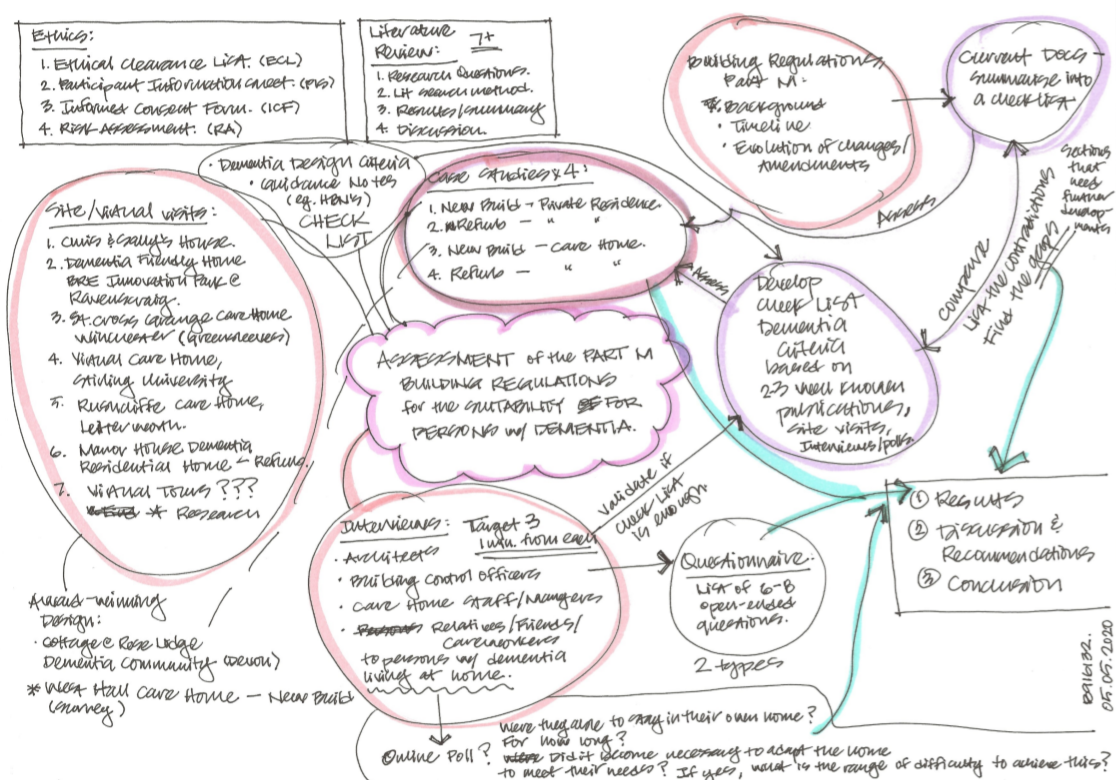
Methodology: Mind Map.
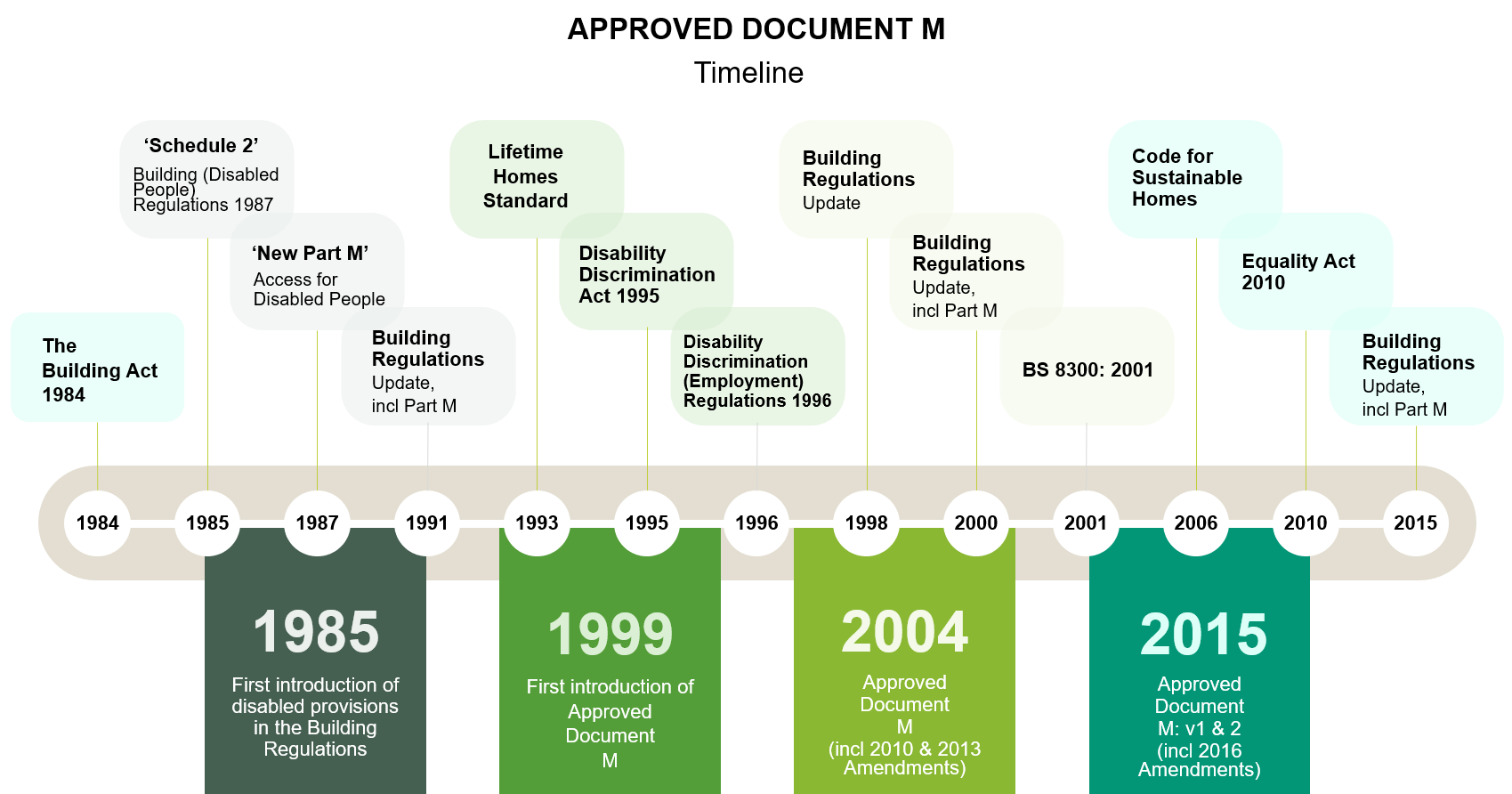
Timeline of Approved Document M.
Background Research: Investigating the various primary and secondary legislations that constitute the Building Regulations and charting Approved Document M’s evolution.
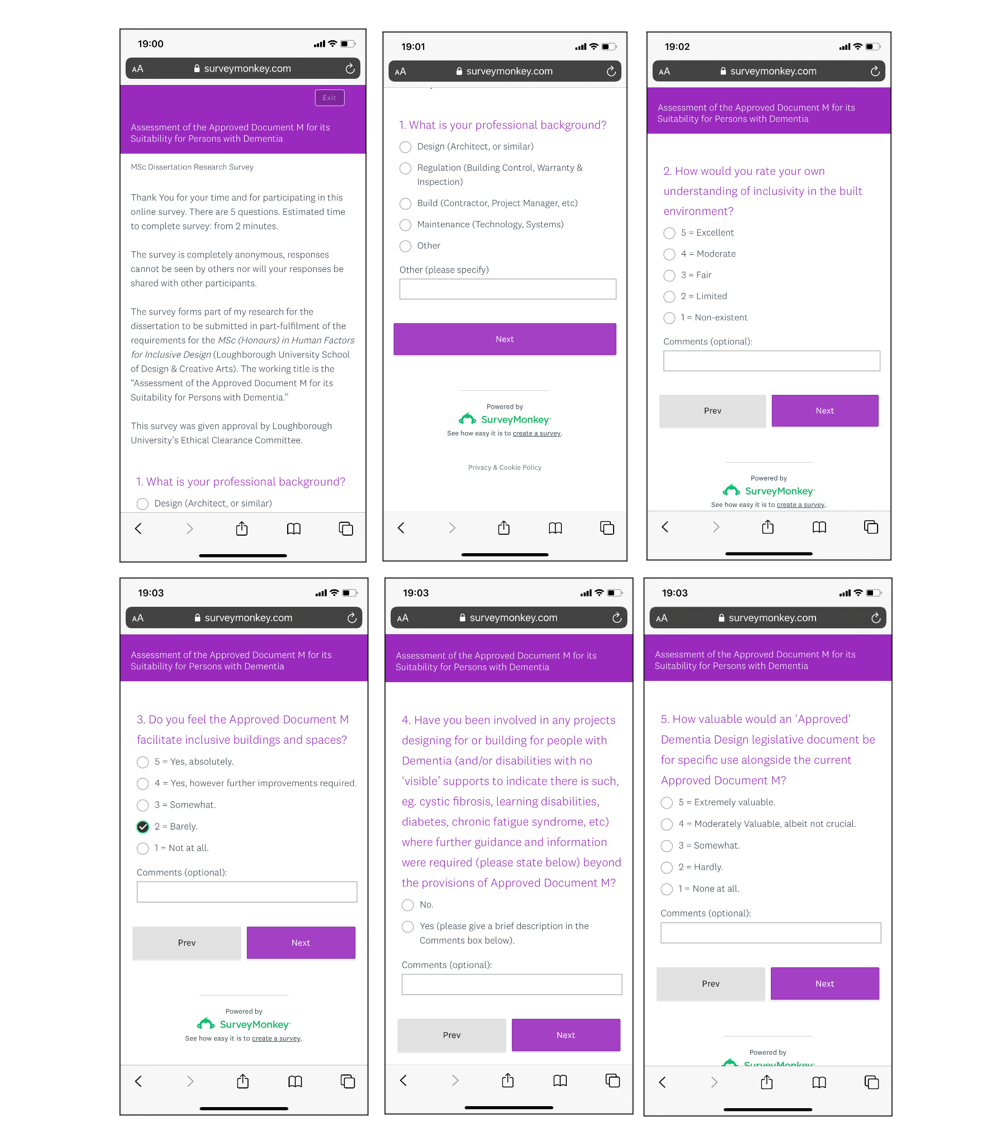
Data Collection: Online Survey mobile screenshots.
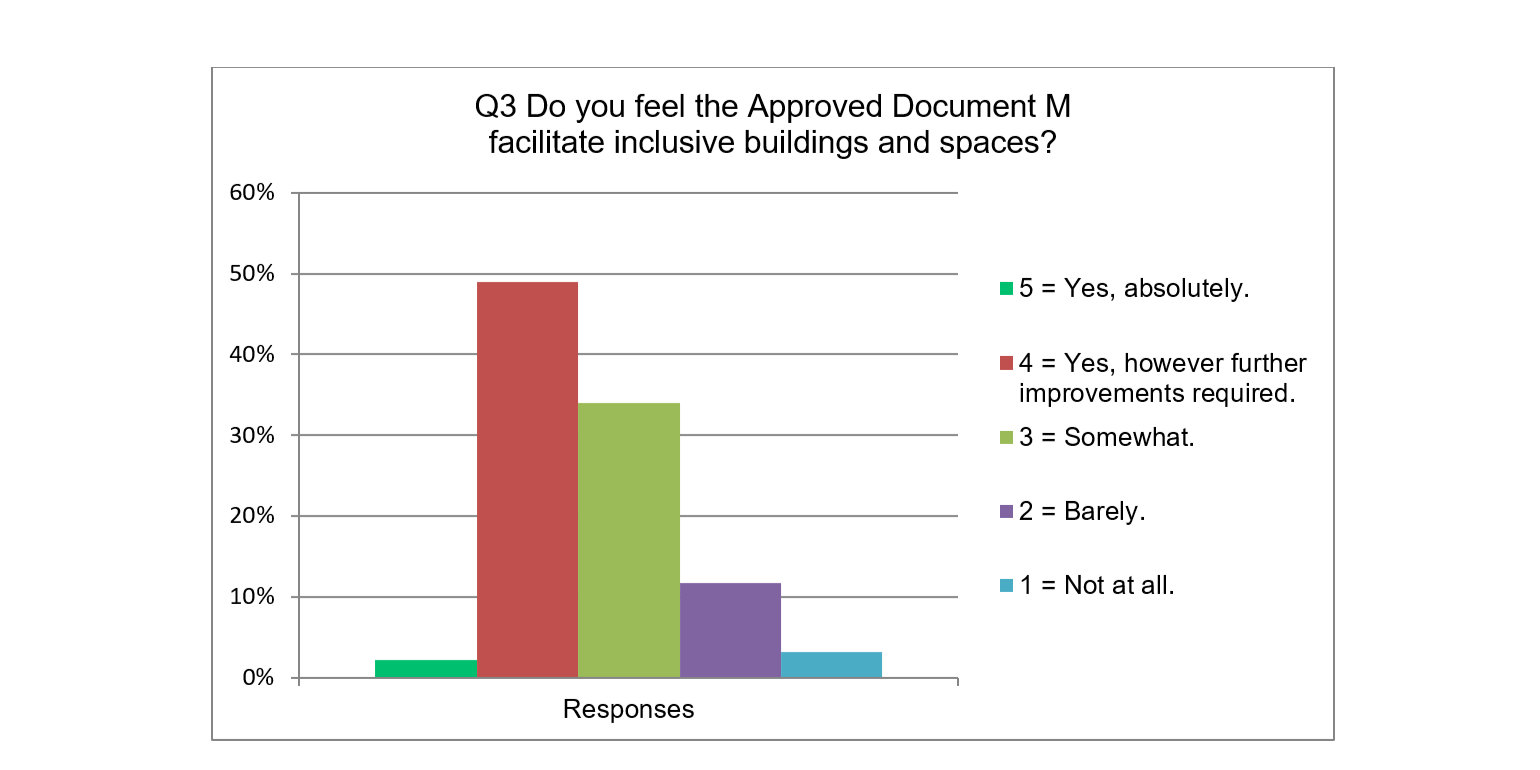
Results: Bar graph of responses to ‘Question 3.'
Results: ‘Question 3’ aims to understand a professional’s opinion of Approved Document M (ADM). A few key points include:
• ADM achieves a very minimal standard and although it has improved through many changes and amendments over the years, the provisions ADM provide require further clarifications and there is still scope for improvement as understanding about issues develops.
• ADM is generic and will always need to be supplemented to meet the specific, individual needs of the end user.
• ADM concentrates on wheelchair access and mobility and/or physical impairment.
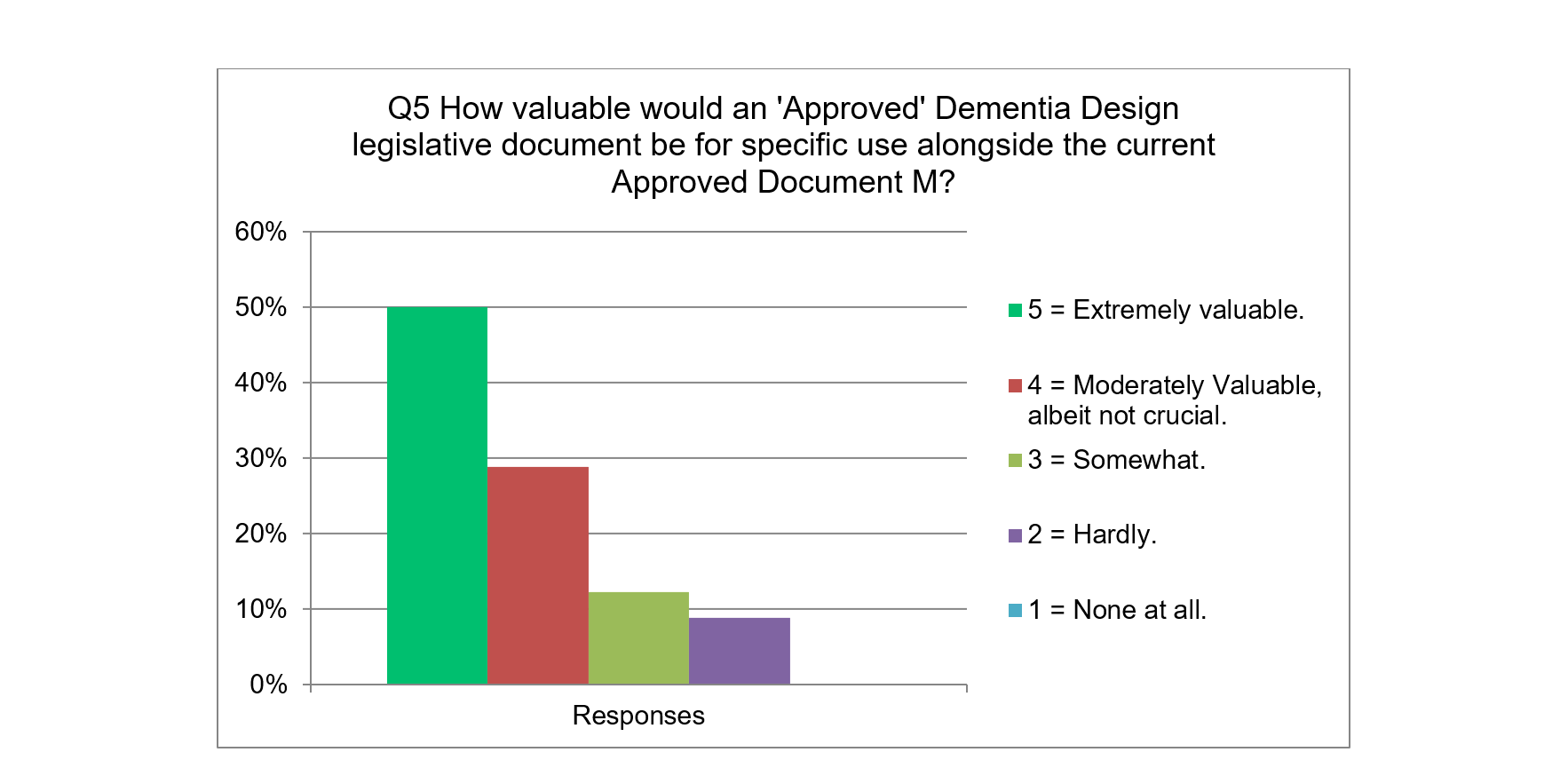
Results: Bar graph of responses to ‘Question 5.'
Results: The key points provided in ‘Question 5’ open-ended responses include:
• Amend and expand ADM to include more provisions for dementia and non-visible impairments, because the more additional documents that need to be followed the more one gets accidentally forgotten.
• The legislation is already in place through the Equality Act 2010, better enforcement of building owners/occupiers doing what is 'reasonable' would be the place to start. It would not be economically viable to legislate all buildings to comply for all disabilities, which is where the Equality Act come in. Specific use defined at the planning stage and suitable planning controls implemented would be better.
• The document should cover not just dementia, however a neuro-diverse population.
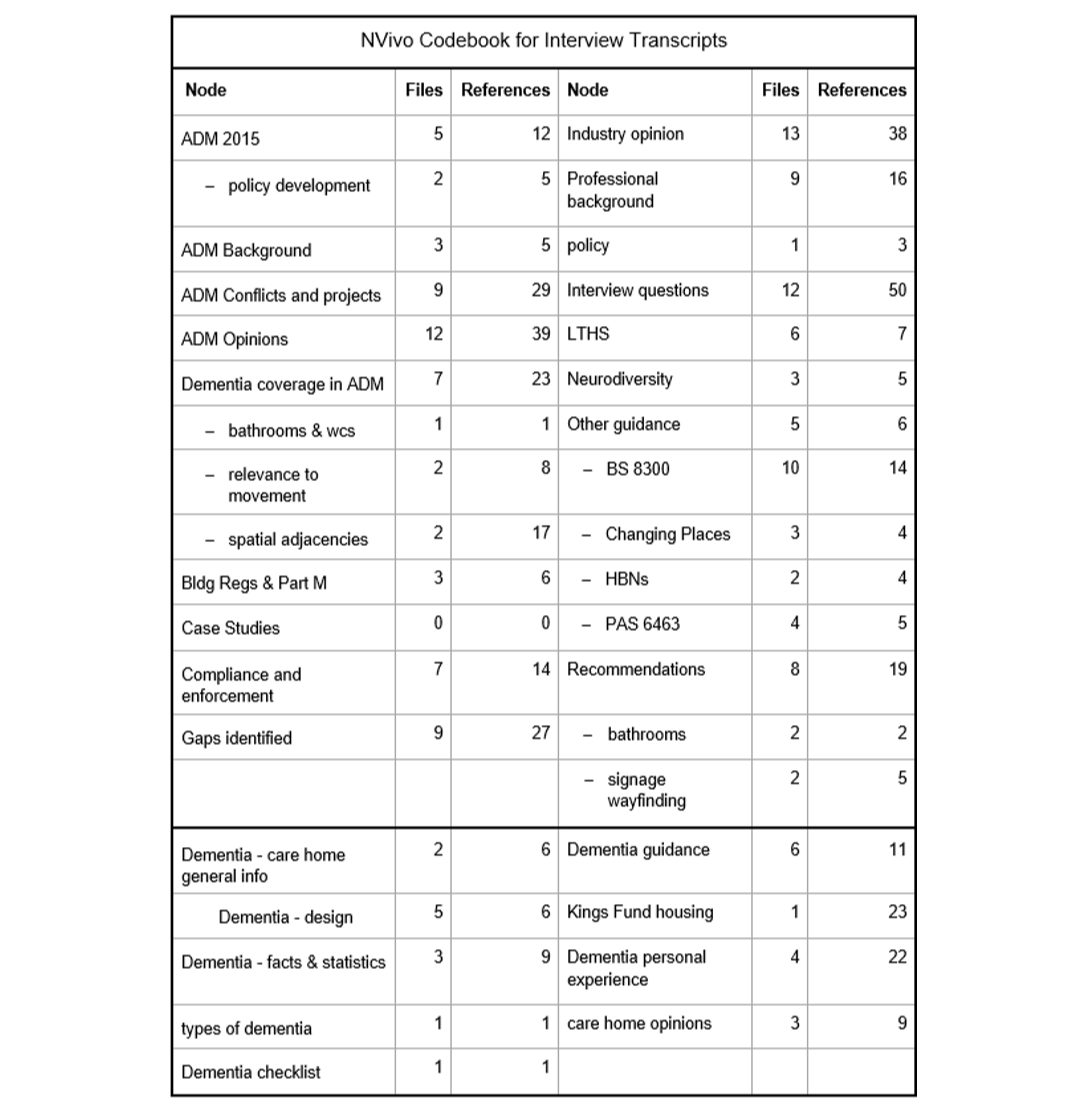
Data Collection: NVivo Codebook for Interview Transcripts.
As interviews were completed, each were transcribed and coded in NVivo. A catalogue of ‘nodes’ or themes arising in each transcript is provided in the table.
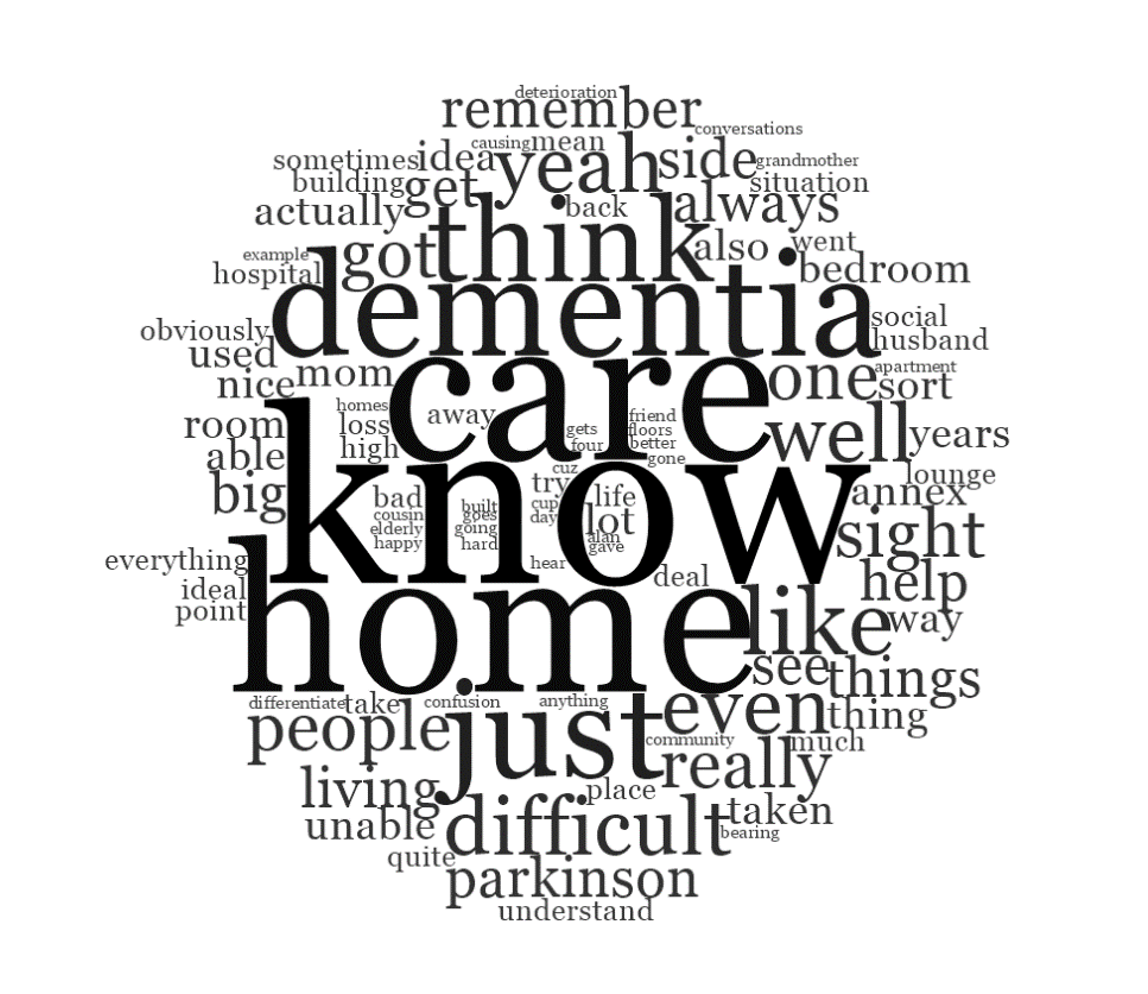
Data Analysis: Word cloud for family members of persons with Dementia.
A word frequency query carried out on the transcripts of family members of persons with dementia highlighted 'dementia, care, home, difficult, people, remember and bedroom' as the keywords indicating their priorities. It was evident from the interviews that 'safety' is most important.
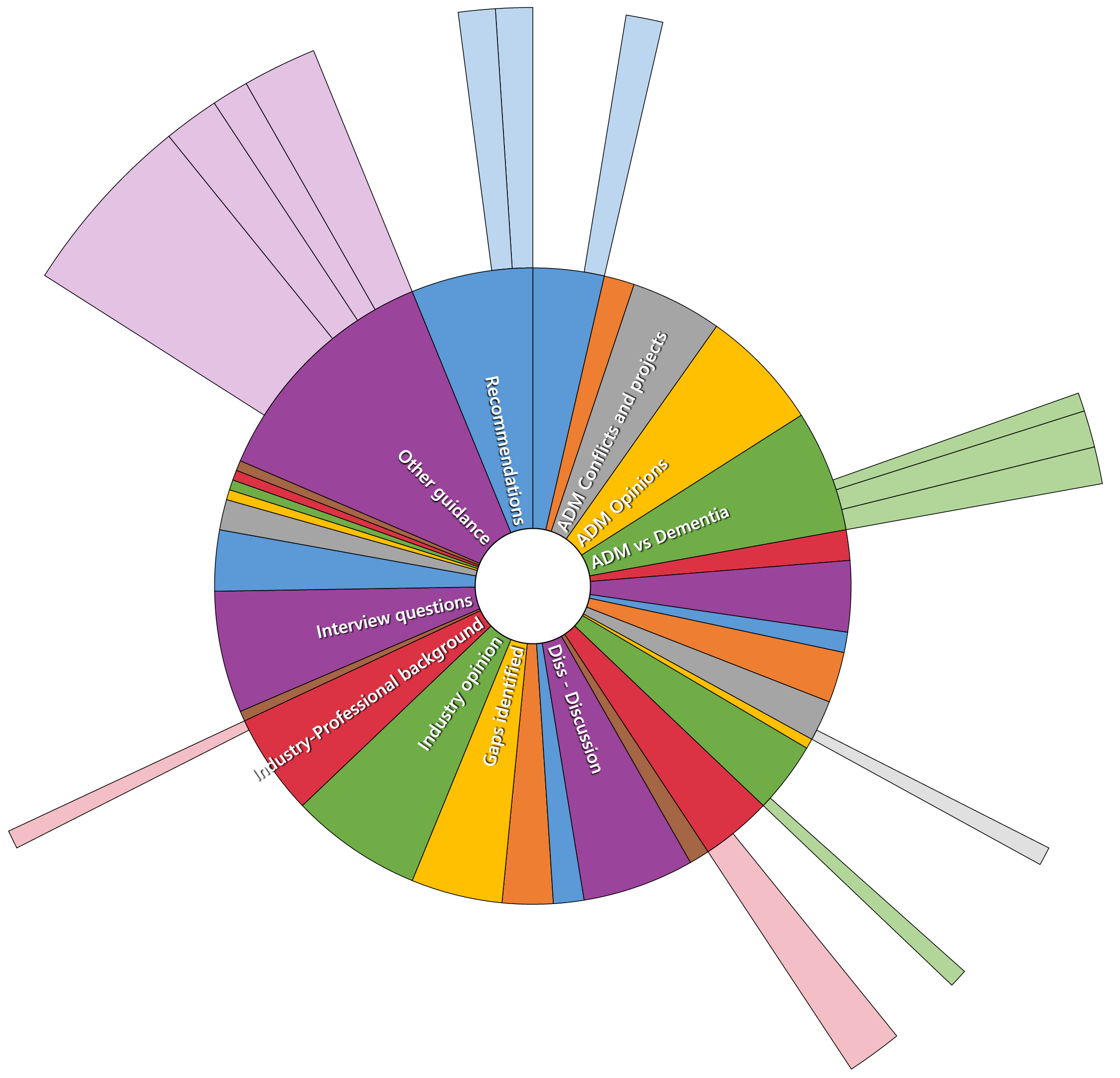
Data Analysis: Hierarchy visualisation of the nodes identified in interview transcripts.
Hierarchy visualisation of the nodes identified in interview transcripts established key themes. The key themes identified are: 1) Industry opinions, 2) ADM opinions, 3) Other guidance e.g. BS8300, HBNs and PAS, 4) Dementia coverage within ADM e.g. Bathrooms and WCs, relevance to movement, space adjacencies, 5) Gaps identified, and 6) Recommendations e.g. Bathrooms, signage, and wayfinding.
Barbara Dunn
Assessing the Approved Document M of the UK Building Regulations to provide suitable environments for the care of persons with dementia, provide a comparison to ‘best practice’ and identify potential improvements in Approved Document M: Volume 2.
A qualified Architect who is highly organised, detail orientated and focused on excellence in customer service with extensive experience in both the architectural and retail sectors. In architectural practice my strengths are in space planning with an interest in biophilic and user-based design. In recent years I have stepped away from architecture to focus on my young family while running a small online business. I now aim to transition into a new phase of my career by studying an MSc in Human Factors for Inclusive Design.
Major Project
Assessment of Approved Document M for its Suitability for Persons with Dementia